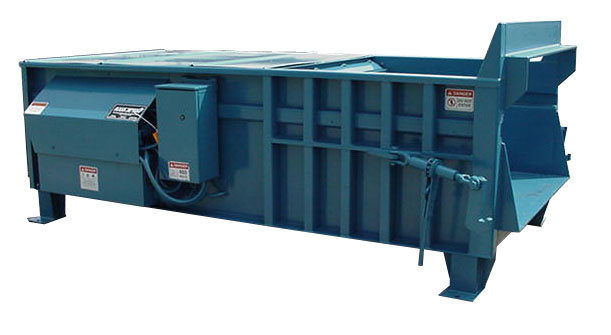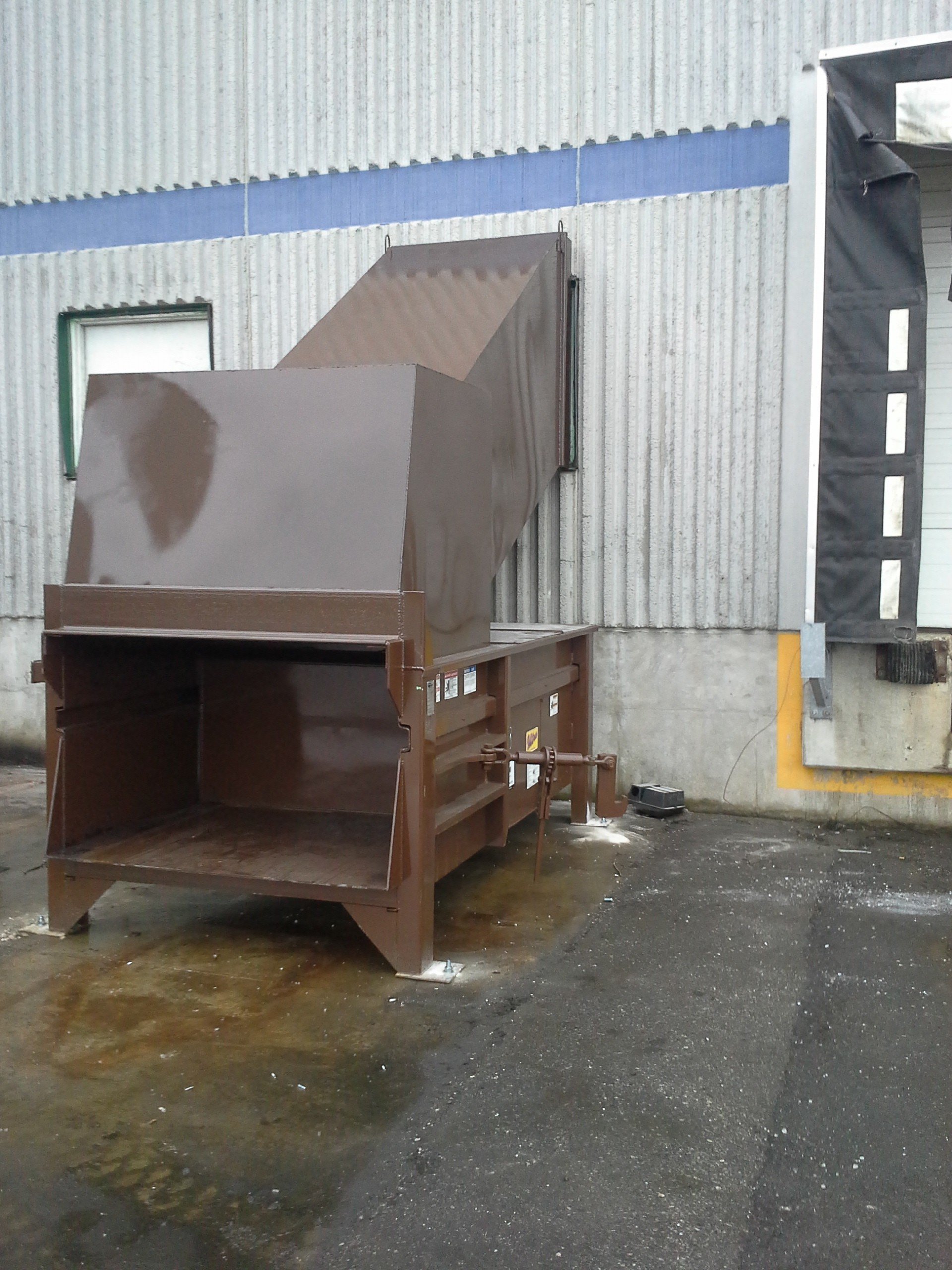Learn how modern Commercial waste compactor equipment can improve your waste handling system
Recognizing the Different Uses of Waste Equipment in the Recycling Sector
The recycling market counts heavily on specialized waste tools to optimize processing and recovery. Each tool, from shredders to balers, serves an unique function that improves total efficiency. Recognizing these roles is necessary for enhancing sustainability initiatives. Commercial garbage compaction equipment. As technology breakthroughs, new advancements emerge, promising to transform standard practices. This evolution elevates crucial concerns about the future of waste monitoring and its effect on environmental conservation. What changes lie ahead for this crucial market?
The Function of Shredders in Material Processing
Shredders play an essential duty in the recycling sector by effectively processing numerous kinds of waste materials. These makers are made to decrease large products, such as plastics, steels, and organic waste, right into smaller sized, manageable pieces. This dimension decrease is vital for succeeding recycling processes, as it permits simpler handling and sorting. Along with promoting recycling, shredders improve security by lessening the danger of injury connected with taking care of large waste things.
Furthermore, shredders add to environmental sustainability by making certain that products are processed in a way that makes the most of source healing. They can deal with a diverse variety of materials, making them versatile tools in waste administration centers. The effective operation of shredders not only streamlines the reusing process however likewise raises the total efficiency of waste diversion initiatives, advertising a circular economic climate. Their relevance in product handling can not be overemphasized, as they offer as a foundational step in the direction of sustainable waste administration methods.

How Balers Enhance Performance in Waste Management
Balers substantially boost efficiency in waste administration by condensing various materials into bales, which simplifies storage space and transportation. By compressing recyclables such as cardboard, plastics, and steels, balers significantly lower the quantity of waste. This compression not only makes best use of area in recycling facilities yet likewise decreases the number of journeys called for to transfer products, resulting in lower gas costs and minimized environmental influence.
Additionally, balers add to boosted safety in waste administration operations. Small bales are less complicated to deal with and pile, decreasing the risk of crashes connected with loose materials. The consistent size of bales enables for more reliable loading and dumping processes, improving procedures within recycling facilities. Furthermore, balers can enhance the overall top quality of recyclables, as appropriately compacted products are much less likely to be contaminated. On the whole, balers play a vital duty in optimizing waste management practices, advertising sustainability in the reusing market.
Conveyor Solutions: Enhancing the Recycling Process
Integrating sophisticated equipment like balers considerably enhances waste monitoring procedures, but the efficiency of the recycling process is further boosted through using conveyor systems. These systems play a crucial role in the seamless transport of materials within go recycling centers. By assisting in the activity of numerous waste kinds, conveyor systems minimize hand-operated handling and lower the risk of contamination throughout the reusing procedure.
Conveyor systems can be tailored to fit the unique formats and operational demands of reusing facilities. Their capacity to run constantly permits a stable circulation of products, enhancing efficiency and guaranteeing that sorting and refining devices gets a constant supply.
Outfitted with functions like flexible speeds and automated controls, conveyor systems can maximize the circulation of materials, substantially improving general performance (Commercial garbage compaction equipment). Subsequently, these systems are important in modern recycling procedures, enhancing processes and adding to efficient waste management
Sorting Equipments: The Trick to Material Recovery
Arranging makers are essential elements in the reusing industry, greatly improving the efficiency of product healing. These makers play a critical duty in the splitting up of different recyclable products, enabling a streamlined procedure that optimizes find out here source removal. By making use of sophisticated technologies, such as optical sensing units and air classifiers, arranging makers can determine and classify products based on their dimension, weight, and structure. This capacity ensures that metals, plastics, and paper items are effectively isolated, lessening contamination and boosting the top quality of recycled outcome.
The procedure of sorting makers considerably lowers the reliance on manual labor, which can be both vulnerable and time-consuming to errors - Commercial garbage compaction equipment. Additionally, the automation supplied by these devices increases the total recycling process, resulting in higher throughput and raised operational performance. Arranging machines are vital in attaining lasting waste administration goals, making it possible for the recycling market to efficiently recoup useful materials while minimizing garbage dump reliance.
Advancements in Waste Devices for a Sustainable Future
Recent advancements in waste equipment are driving the reusing industry toward an extra lasting future. Innovations such as automated sorting systems, which make use of expert system and artificial intelligence, enhance effectiveness by accurately identifying and dividing recyclables. This results in greater recovery rates and minimized contamination. Furthermore, advancements in compacting technology enable a lot more effective transport of materials, decreasing carbon footprints during transit.
Innovations in shredding devices enhance the processing of complicated products, allowing the recycling of items that were as soon as considered non-recyclable. The integration of renewable resource resources, like solar energy, in waste handling facilities even more adds to sustainability goals. Furthermore, developments in naturally degradable materials and waste-to-energy innovations are reshaping the landscape of waste monitoring. Collectively, these advancements symbolize a transformative change within the recycling market, promoting not just environmental protection yet likewise financial practicality for future generations.
Regularly Asked Inquiries
What Kinds Of Materials Can Waste Tools Manage?
The types of products waste equipment can take care of include plastics, steels, paper, glass, and organic official website waste. Each tools type is made for details materials, maximizing efficiency and efficiency in sorting and refining various waste streams.
How Usually Should Waste Tools Be Kept?

Exist Safety And Security Interest In Making Use Of Waste Tools?
Security worry about making use of waste tools consist of possible injuries from mechanical breakdowns, exposure to harmful products, and poor training. Correct upkeep, regular inspections, and employee education and learning are vital to mitigate these risks effectively in any setting.
What Is the Ordinary Lifespan of Recycling Equipment?
The average life-span of recycling devices commonly varies from 10 to two decades, depending upon aspects such as usage intensity, upkeep practices, and technological developments, which can considerably affect durability and effectiveness in time.
Exactly How Is Waste Devices Powered in Recycling Facilities?
Waste tools in reusing centers is usually powered by power, though some equipments might use different power resources like natural gas or diesel. This power enables effective handling and improvement of products for recycling objectives.
Shredders play an essential role in the reusing sector by effectively processing numerous kinds of waste products. They can take care of a varied array of materials, making them versatile tools in waste management facilities. Balers considerably improve performance in waste monitoring by compacting various products into bundles, which simplifies storage and transport. The kinds of materials waste equipment can take care of consist of plastics, steels, paper, glass, and organic waste. Security concerns with using waste devices include prospective injuries from mechanical malfunctions, direct exposure to unsafe materials, and poor training.